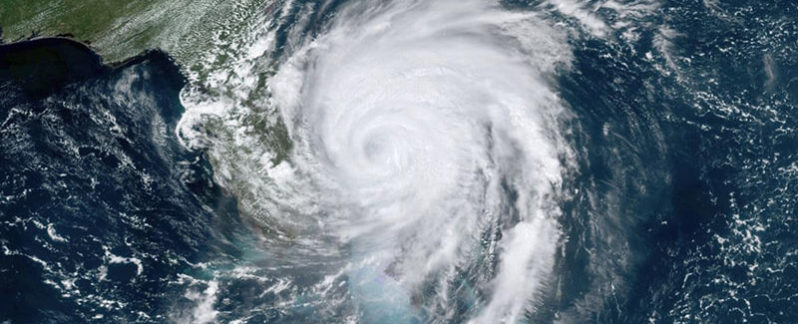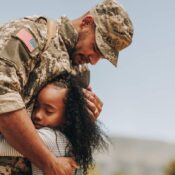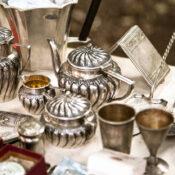
What to Do After a Hurricane: Salvaging Household Items
October 25, 2024 | Your Local Metro
Preparing for a hurricane is no easy feat. Especially if you have multiple family members, beloved pets, or both in your care. But at the end of the day, everyone’s safety and salvaging household items become more important than ever. In the rush of any evacuation whether it be fire or flood, ensuring everyone can make it to safety is a priority. It’s entirely understandable when valued objects and sadly, even when pets sometimes get left behind.
Hurricane 101: What to do After a Hurricane
After a tropical storm, residents are faced with the challenging task of cleaning up. Public offices switch from response and rescue mode to recovery efforts with restoration and rebuilding in areas hit by the storm. Before salvaging household items, the most important thing to remember is to make your safety a priority when returning to the aftermath of a hurricane to clean and empty out your home. While many things will disappear as a result of flood damage, others can be saved.
Rescue the Most Valuable Items First
Returning to your house after a hurricane is often heartbreaking. However, when salvaging household items that have sustained water damage from a hurricane, look for the most valuable items first. FEMA recommends finding and rescuing “irreplaceable” valuables such as money, jewelry, family heirlooms, artwork, photographs, and other sentimental belongings.
Once it’s deemed safe by local officials, and you ensured the gas and electricity lines have been turned off, examine your property to determine if there is flood damage. If there is, contact your agent or insurance company and let them know you are salvaging household items and that you’d like to start your flood insurance claim and ask for an Advance Payment to help you begin recovering.
Be sure to document your flood loss using photos and videos before you start post hurricane clean up. Once you have documented your losses, look to recover valuable personal items first that are irreplaceable like jewelry, family heirlooms, photographs, and important documents.
How is a tropical storm different than a hurricane?
Tropical storm vs hurricane: what’s the difference? A hurricane is a type of tropical cyclone that brings with it thunderstorms and high winds. Hurricanes and tropical storms are both types of tropical cyclones. The difference is in the intensity.
A hurricane is the most intense type of tropical cyclone with sustained winds of 74 mph or higher, while a tropical storm can have sustained winds of 73 mph or less.On a practical level, the damage can be the same regardless of what type of storm it is. Although a hurricane produces more intense wind and flooding, a building can still be subjected to significant damage in a tropical storm, including wind, rain, storm surge, mud, mold, and debris.
How to Fix Water Damaged Wood
Solid wood furniture including family heirloom and antique furniture can usually be cleaned and repaired after receiving water damage. Wood alcohol or turpentine applied with a cotton ball can help remove white mildew spots on the wood.
After the furniture is dried out, cream wood restorers with lanolin will help restore good wooden furniture parts. However, upholstered furniture soaked by contaminated floodwaters are usually discarded due to health concerns.
How to Clean Clothes and Linens Damaged by Hurricane Floodwaters
Salvaging household items like clothes and linens after a hurricane is easier if you have working appliances. Wet textiles are the perfect breeding ground for mold and mildew. As soon as the floodwaters recede and the water has been removed, the next priority is to clean clothes and other water-soaked fabrics. Before you begin, please check with your local health department to ensure water used for cleaning is now safe for use, and that it is safe to use your appliances.
Although you may be inclined to wash these items in very hot water, high water temperatures can set any stains that have developed. Here is some guidance for storm clean up:
- Sort your clothes and textiles into piles of washable and dry clean only fabrics.
- Sort your washable clothes into whites and colored clothing. Do not leave wet colored clothes mixed with whites because dye transfer can occur.
- Using a hose, rinse as much mud as possible from the clothing. Do not put mud-covered clothing directly in the washer because the sludge can overwhelm the washer’s drainage system.
- Wash the clothes in the hottest water recommended for the fabric. To disinfect, for white cotton fabrics, add one cup of chlorine bleach in the wash cycle. For fabrics that cannot be washed with chlorine bleach (spandex, wool, silk, colored clothes), add one cup of pine oil disinfectant (Pine-Sol) or one cup of phenolic disinfectant (Lysol) to the wash cycle.
- After washing with disinfectant, inspect clothing for remaining stains. If stains remain, do not dry the clothing. Allow soiled clothing to soak overnight in a solution of oxygen-based bleach and then wash as usual with regular laundry detergent.
- Dry clothing in a dryer at the highest heat recommended for the clothing to help kill bacteria. White clothes can be hung outside in the sun where ultraviolet rays will help kill bacteria.
What to do with Kitchen Items and Food After Flood Damage
Like the other appliances in your house, you will want to make sure your dishwasher is safe to use, and that water to your house is safe to drink, and that the sewer system is working properly.
Examine food and kitchen items carefully after a flood. Contamination may occur if floodwaters have covered, or even dripped on your food. Some foods may be protected by their containers.
If you have any doubt about the safety of food, it is always better to throw it out rather than risk disease. Run all of your pots, pans and utensils through the dishwasher on high heat to help clean and sanitize them.
Many food items will be obvious that they need to be discarded. A few of the items you might not expect are contaminated that can pose a risk::
- Plastic bags of food, even if boxes and containers inside the bags seem dry. These include pastas, cereals, rice, dried milk, crackers, cookies or mixes.
- Screw-topped or crimp-topped jars or bottles of food that have been touched by floodwaters, even when jars have not been opened. This includes all home-canned foods in glass jars and bottles as well as all jams, jellies, honey, molasses, syrups, fruits, pickles, etc., in glass jars. There is no reliable lid in use on glass food containers that will keep out water if the container is immersed.
- Porous non-food items that are used with food, and items made of hard rubber, plastic or other flexible (porous) materials, such as baby bottle nipples, pacifiers, and plastic or wooden dishes and utensils.
An Important Note About Food Touched by Floodwaters
According to FEMA, food (even in cans and sealed jars) is highly susceptible to contamination during a flood. Call the U.S. Department of Agriculture’s Food Safety Hotline at 1-800-535-4555 between 10:00 am and 4 pm, Eastern Time, Monday through Friday to have a food flood expert answer your questions about whether to keep or discard food. FloodSmart.gov also offers further resources on how to prep your food items for a possible flood and more.
Renters insurance typically covers personal belongings damaged by events such as hurricanes, but it does not cover the structure of the building, as that is the landlord’s responsibility. However, renters insurance often excludes flood-related damage, which is common with hurricanes. To protect your belongings from flood damage, you may need to purchase a separate flood insurance policy through the National Flood Insurance Program (NFIP) or a private insurer. It’s essential to review your policy carefully to understand exactly what is covered and consider adding additional coverage if you live in a hurricane-prone area.
Flood insurance typically covers damage caused by flooding, which can result from hurricanes. However, standard homeowner’s insurance policies often exclude flood-related damage. To ensure you are fully protected, it’s important to have both flood insurance and homeowner’s insurance. Be sure to review your policy details to understand what types of hurricane-related damage are covered.
Rent a Storage Unit for Salvaged Items
Once the rains have stopped and you’ve had the opportunity to take inventory of what needs to be replaced or thrown out, renting a self storage unit will help to hold your salvaged items while you home is undergoing flood repairs. When you choose a unit from Metro Self Storage, you’ll also gain access to a friendly and knowledgeable storage team and a state-of-the-art facility with convenient amenities. Find a Metro Self Storage facility near you today!




